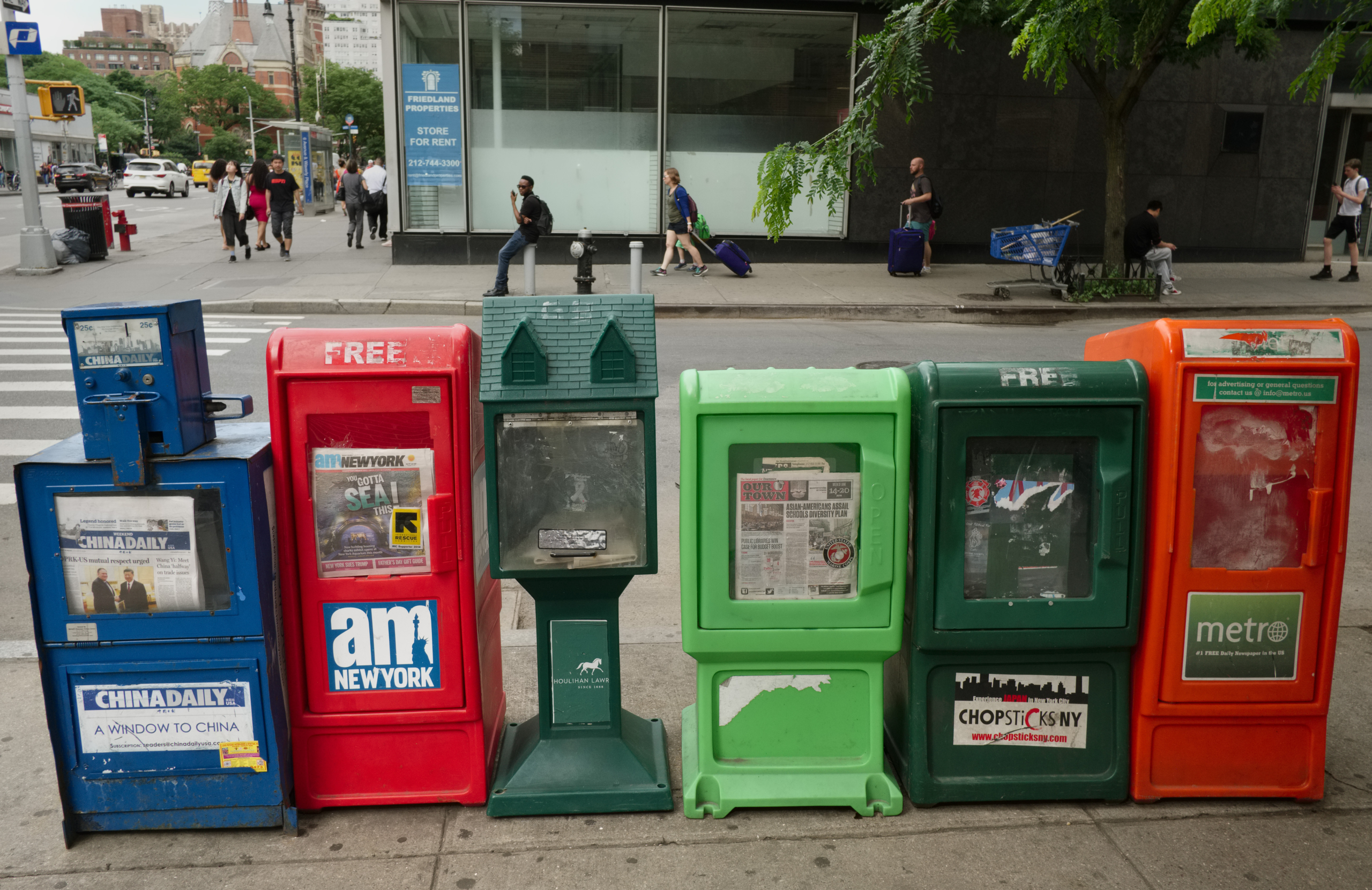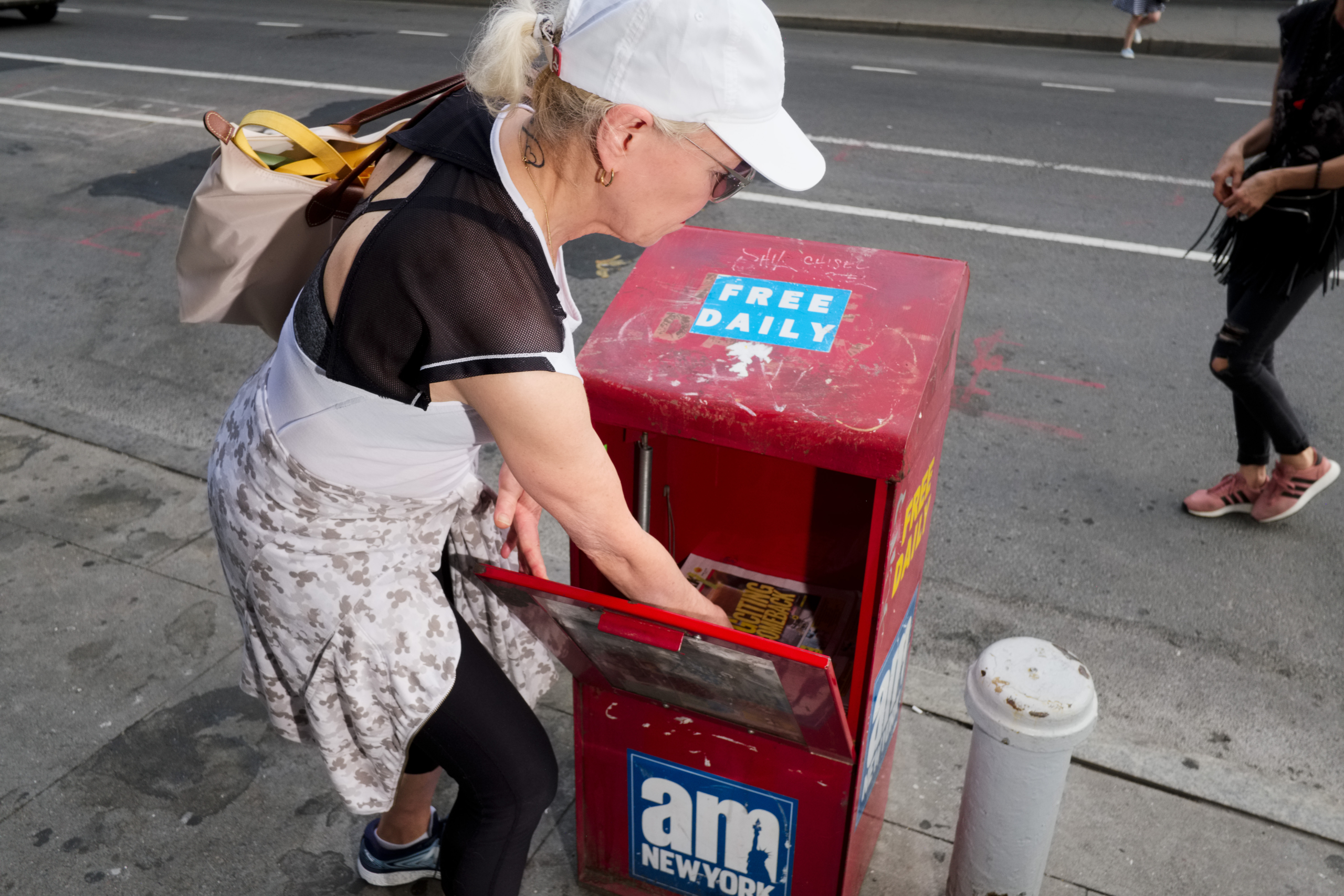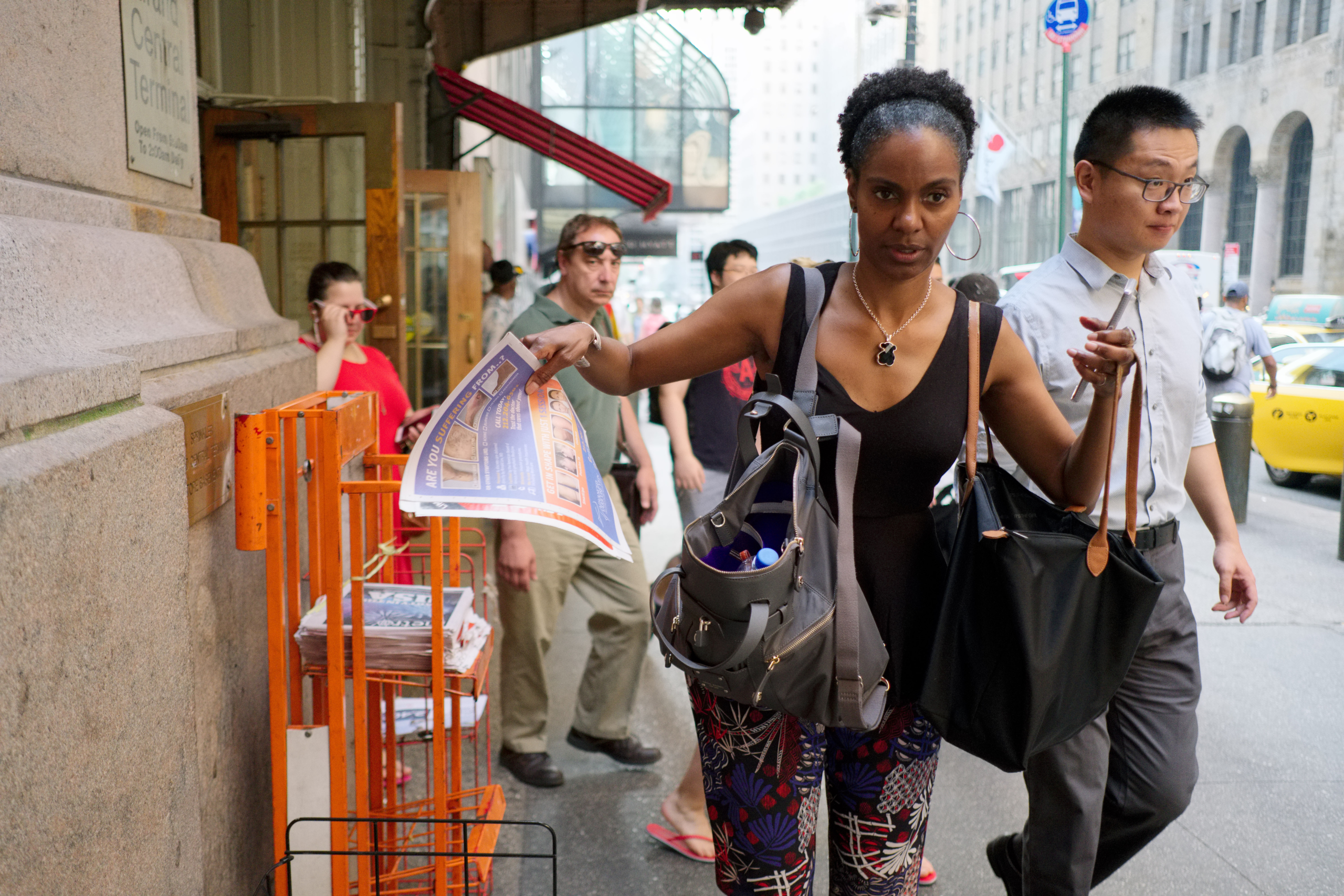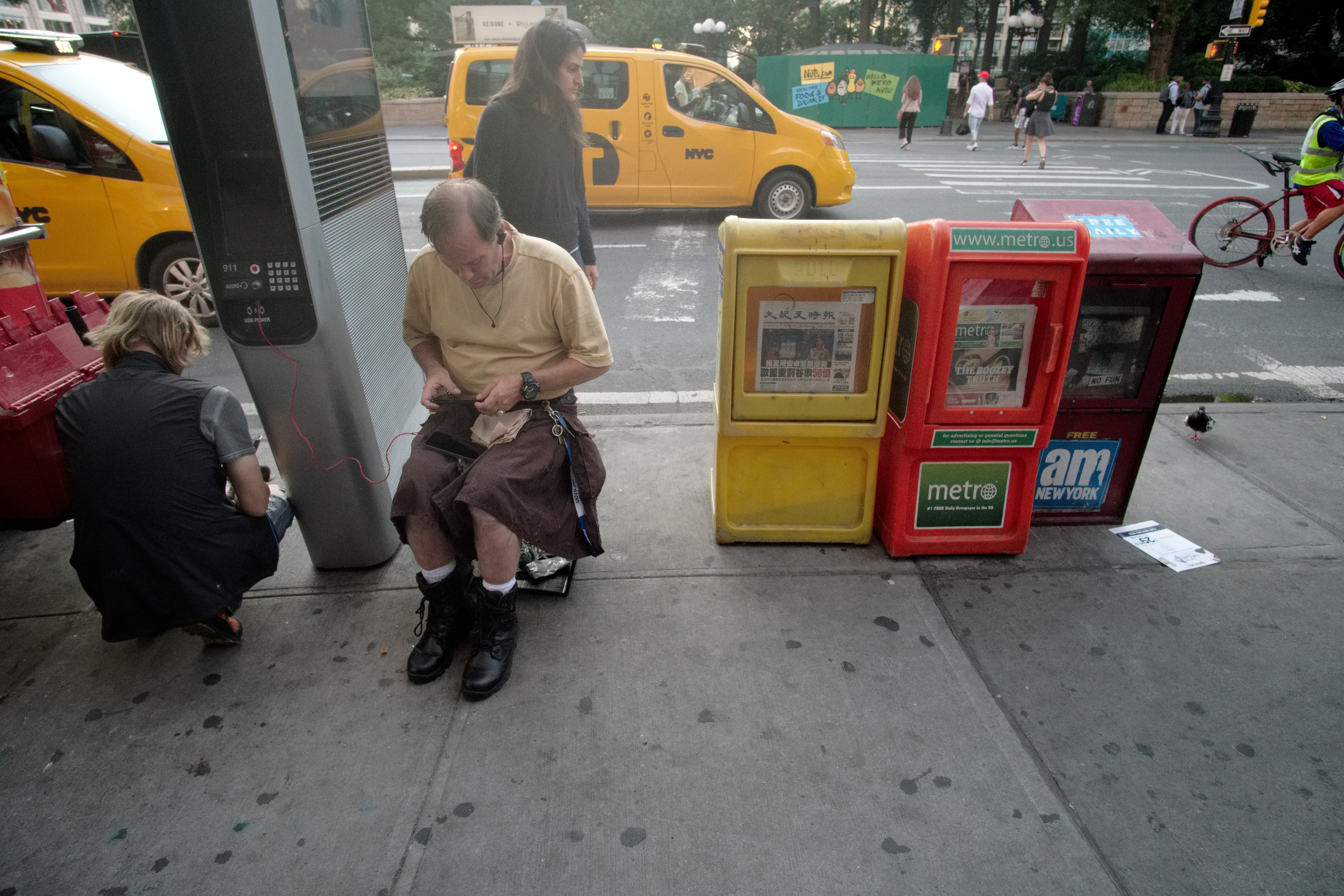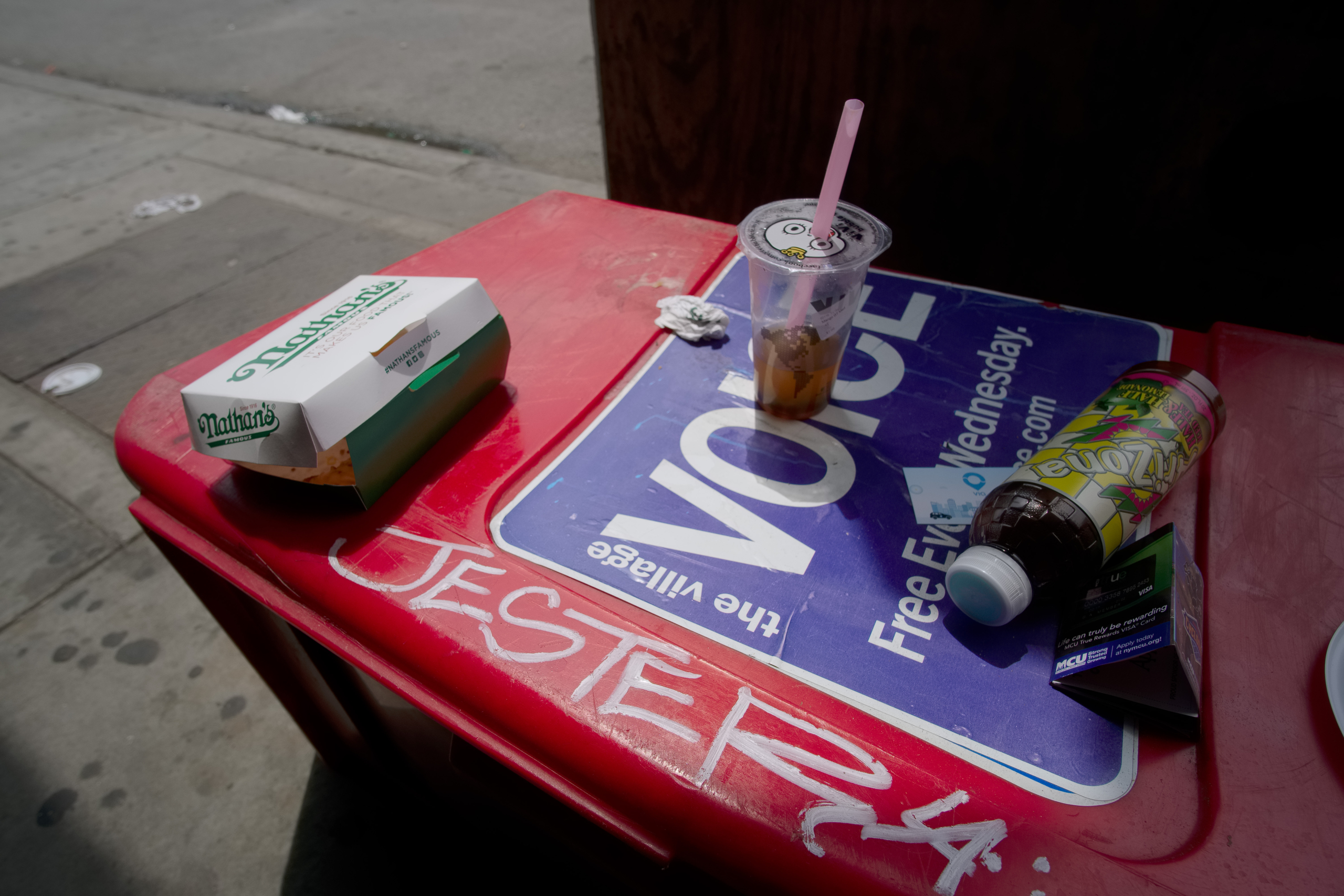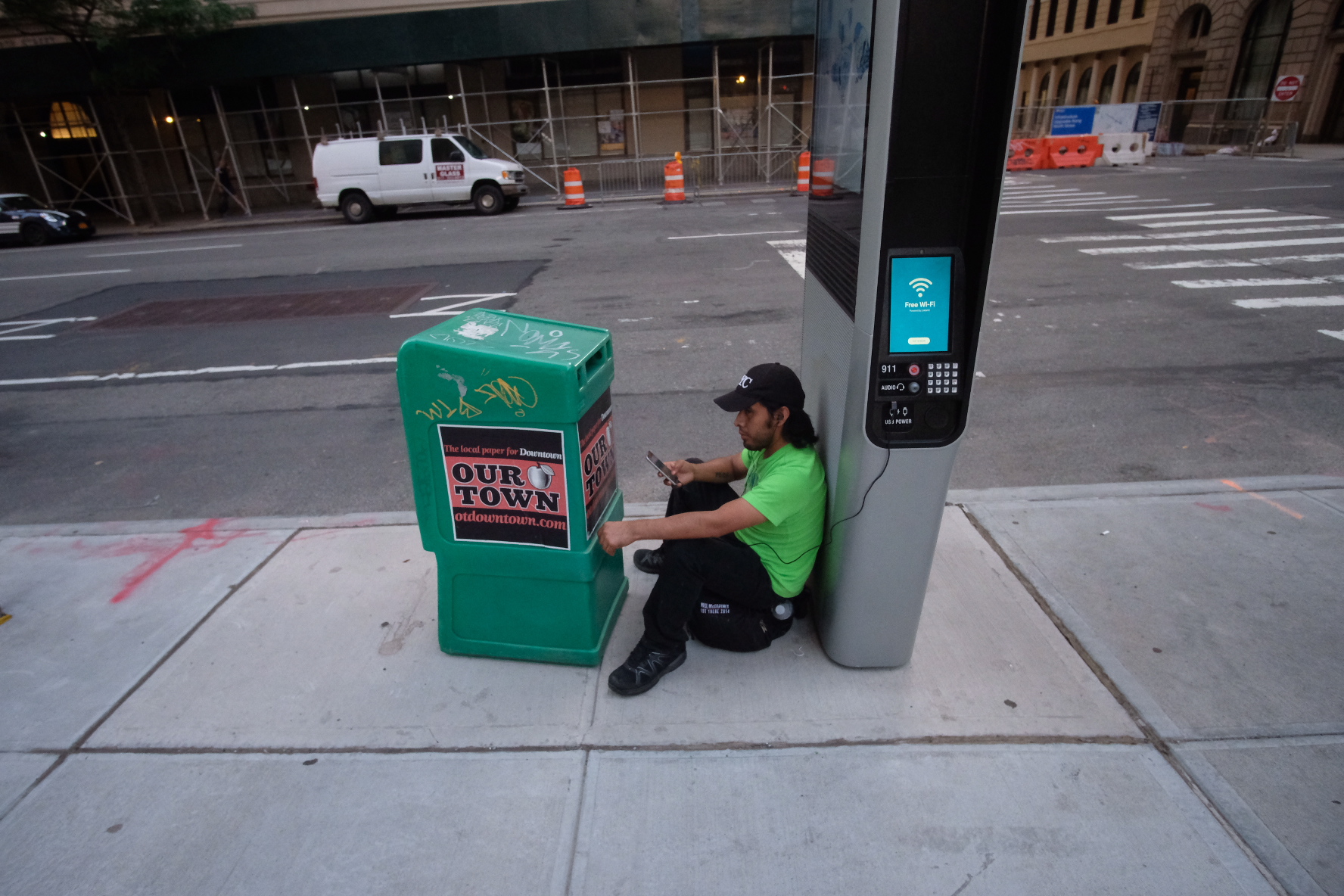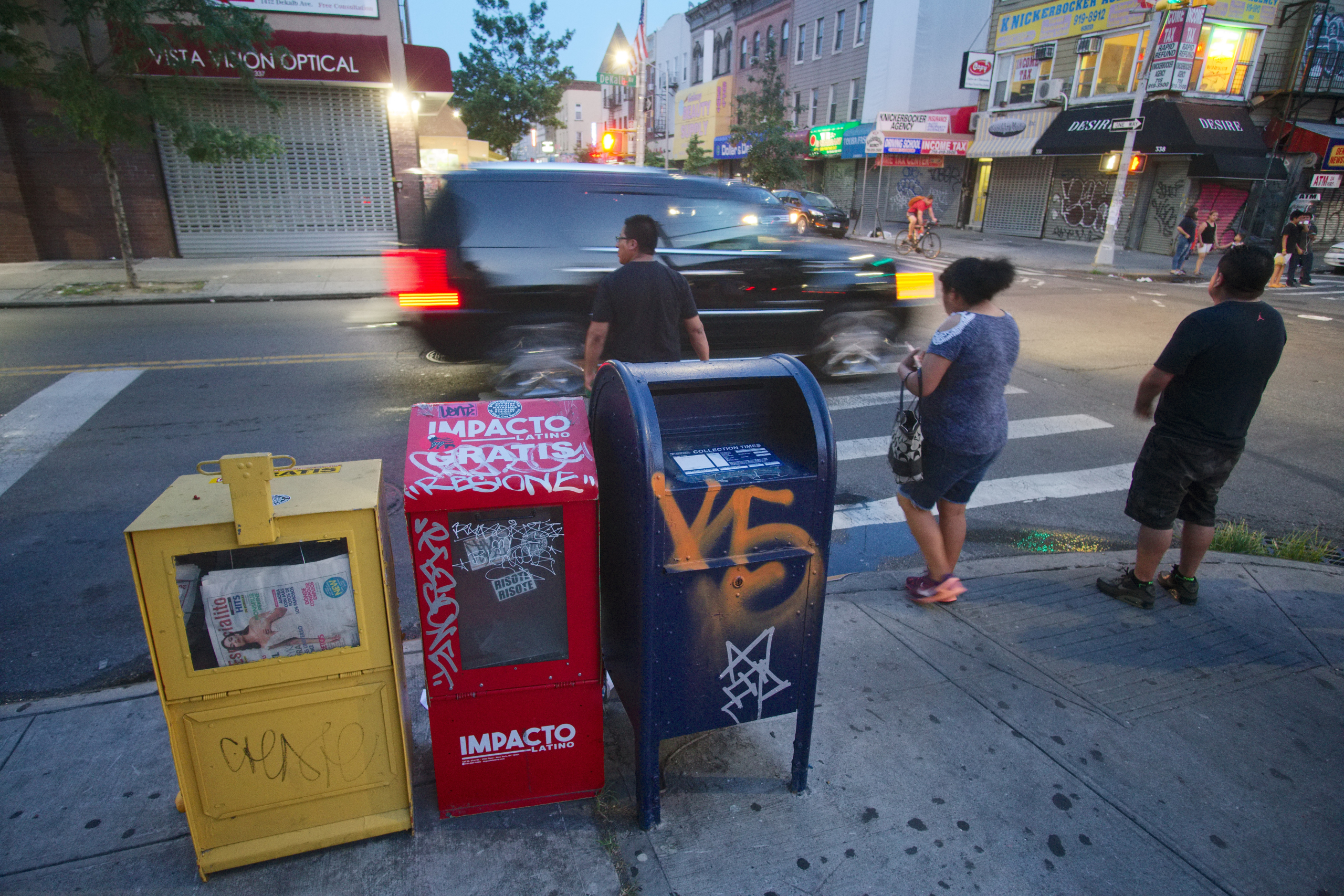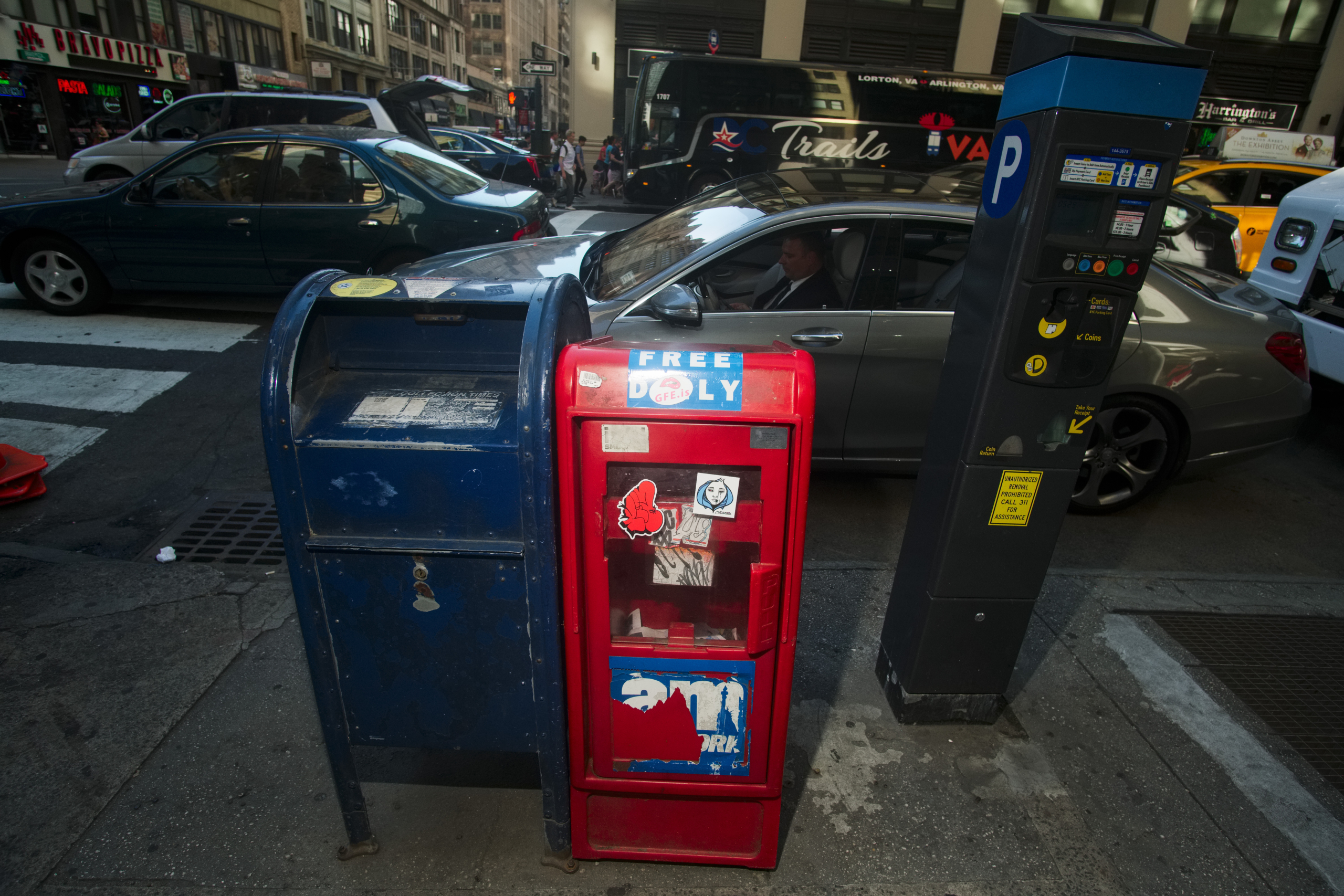Sign up for The Media Today, CJR’s daily newsletter.
HONOR BOXES—the newspaper-stuffed containers ubiquitous in many American cities—linger in New York City, many of them static and dilapidated. Their colorful plastic and metal painted shells function as bulletin boards; they’re frequently covered in stickers, scrawled with pens and markers, stuck with postings for various services around the city. While many are still restocked, others have gone news-free for months, a consequence of changes to how we consume the news. Since The Village Voice went digital-only, its iconic red boxes have largely vanished from the ranks of boxes and wire racks that cluster corners and train stations.
Even empty of papers, the boxes convey a sense of locality. For decades, they functioned as beacons of information, much of it local and free. An honor box offered passersby a modest window to stories, photographs, and advertisements; it was less intrusive and insistent than a push notification, its contents accessible to anyone who might open the door.
New York’s boxes, diminished in stature if not in number, link the city’s landscape to those news institutions that populate it with information.
That accessibility has raised plenty of criticism and debate. The US Supreme Court heard arguments in 1988 over who could regulate the public placement of news racks. Honor boxes have been tagged for confiscation based on their condition, or rounded up without notice to publishers. They’ve been criticized as nuisances, security issues, and eyesores. They’ve also been memorialized as an essential piece of news technology—take this tribute, from MinnPost—and repurposed as lending libraries.
Despite the availability of information online, people still open honor boxes, just as they still buy papers from coin-operated boxes, racks, and magazine stands. New York’s boxes, diminished in stature if not in number, link the city’s landscape to those news institutions that populate it with information. Those that have been abandoned—their colorful shells left behind for good—are vivid reminders of the news business’s metamorphosis.
ICYMI: Freelance photographers say these are the best outlets to pitch
Has America ever needed a media defender more than now? Help us by joining CJR today.



